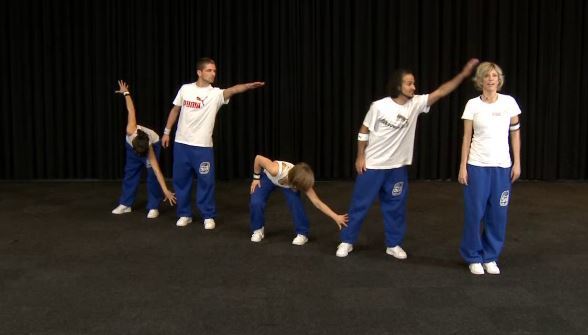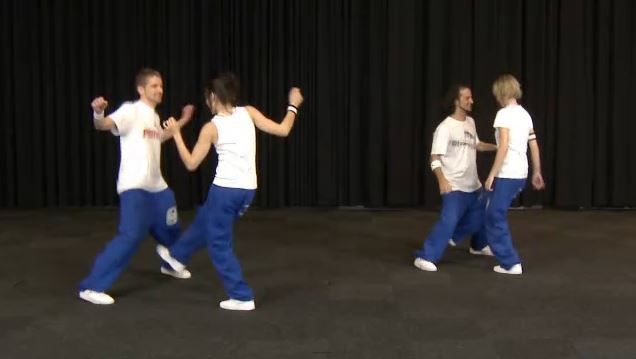General Informations
In this section, the dance moves are not the main focus; examples from the category Tips & methods provide concrete inputs for forms of organisations and exercises as well as inspiration for successful choreographies. The examples also contain suggestions for methodical-didactical implementation ways for working with music.
The focus is on a variety of actions to learn, use and arrange dance steps.
Acquiring and consolidating a movement pattern in "Swarm", present some variety. The change of partners adds some variety to the exercise and ensures that the students are constantly moving.
Helpful prerequisites:
- Music perception
Tips for implementation:
- Only use half of the gym for the exercise - this way, you can keep an eye on all of the group.
- Agree on audio-visual cues (for example the sound of a whistle or when the teacher lifts both arms) to indicate when to change partnersPlay some music during the practice phase (motivation). The sound volume can be varied.
- For younger students and beginners, it may be useful in the beginning to choose the first, second and third partner before starting the exercise so that they don't forget their dance partners. When working with older or advanced students, changing partners can happen spontaneously during the exercise.
- Play some music during the practice phase (motivation). The sound volume can be varied.
Further steps:
- Possible exercise: Give specific parameters for selecting new partners such as having the same eye colour.
- Students are asked to make sure that they are using the available space in an optimal and even way.
Tips relating to the music: further information can be found under the heading Tips & methods > Music
- Good, motivating music is very important. Use songs that are currently popular every now and then. Bring faster and slower music to the lesson. These add variety and motivation to lessons.









